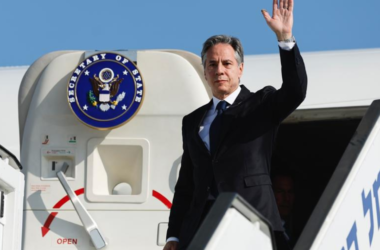Australia’s center-left Labor government has unveiled a revised tax policy aimed at appeasing voters grappling with soaring living costs. The changes, announced on Thursday, involve scaling back benefits for higher-income individuals while providing additional relief for those on lower incomes. Prime Minister Anthony Albanese emphasized that the adjustments aim to benefit all 13.6 million Australian taxpayers, positioning the plan as a comprehensive measure for citizens across the income spectrum.
Effective July 1, individuals earning up to A$135,000 ($88,763) will experience a shift to lower tax brackets. Notably, tax breaks for high-income earners will be nearly halved, and the resulting savings will be redirected to support lower-income individuals. Prime Minister Albanese emphasized the inclusivity of the plan, asserting that it addresses the needs of middle Australians and taxpayers at various income levels.
Addressing concerns that the revised tax breaks could exacerbate inflationary pressures, Prime Minister Albanese underscored that the Treasury has provided assurances that the changes would not fuel inflation. He characterized the policy as broadly revenue-neutral and job-supportive, seeking to alleviate worries about potential economic ramifications.
Treasurer Jim Chalmers engaged in discussions with Michele Bullock, the governor of the Reserve Bank of Australia, regarding the tax adjustments. According to Albanese, the Reserve Bank expects no implications on its inflation forecast from these tax changes. This collaboration reflects the government’s commitment to ensuring economic stability in the face of evolving fiscal policies.
Opposition leader Peter Dutton accused Prime Minister Albanese of undermining his credibility by deviating from an election pledge not to modify the tax policy legislated by the previous government in 2019. Dutton contended that the public would not support a leader who breaks promises. In response, Albanese defended the policy shift, emphasizing its benefits for a broader segment of the population, particularly those in low-income groups.
The government estimates that an individual with an average income of around A$73,000 will receive a tax cut of A$1,504, an A$804 increase from previous estimates. This adjustment aims to put more money into the pockets of middle and lower-income earners, providing tangible relief amid the challenges posed by high inflation rates.
Australia has been grappling with high inflation, reaching 7.8% in December 2022 before slowing to 5.4% in the third quarter of 2023. The economic strain has contributed to declining approval ratings for Prime Minister Albanese since his election win in 2022. Two recent polls indicated higher disapproval ratings than approval numbers, highlighting the urgency for responsive economic measures.
Australia’s Labor government’s recalibration of tax cuts reflects a strategic move to address the economic concerns of its citizens, particularly those facing the brunt of rising living costs. The commitment to inclusivity and assurances regarding inflation risks demonstrate a delicate balancing act in economic policymaking. As the political landscape responds to these adjustments, the impact on public sentiment and the government’s ability to navigate economic challenges will be closely observed in the coming months.








